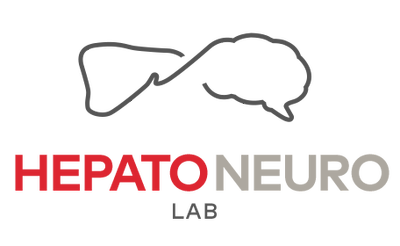
Hepatic metabolism of uric acid in rats with bile duct ligation.
, Microbiologie et Immunologie, Université de Montréal
Direction:
- Christopher Rose
- Emmanuel Charbonney
2022 - 2022
Related Publications
Sydnée L’Écuyer, Alexandra Matesan, Farzaneh Tamnanloo, Mariana Oliveira, Mélanie Tremblay, Emmanuel Charbonney, Christopher F. Rose.
Problématique: L'encéphalopathie hépatique (EH) est un syndrome neuropsychiatrique résultant d'une maladie du foie. Il a été démontré que le microbiote intestinal influence le cerveau et l'association entre l'altération du microbiote et les maladies hépatiques ressort dans de nombreuses études. Objectif : Explorer l'impact de la transplantation de microbiote fécal (FMT) sur le développement de l’EH de rats ayant subi une ligature du canal biliaire (BDL). Méthodologie: Des rats mâles ont été randomisés en trois groupes : SHAM, BDL-VEH et BDL-FMT recevant quotidiennement la FMT provenant des rats SHAM. Après cinq semaines, des tests comportementaux sont effectués pour évaluer la mémoire à court/long terme, l'anxiété et la coordination motrice. Les fèces et plasma ont été collectés pour séquençage bactérien et analyses. Résultats: Les BDL-VEH ont développé une perte de mémoire à court/long terme et une perte de coordination motrice comparée aux rats SHAM. Cependant, les altérations neurologiques sont prévenues dans le groupe BDL-FMT. Une modulation du microbiote a été constatée pour les rats BDL-FMT comparé aux BDL-VEH. Les cytokines (TNF-α et IL-1β) ne varient entre les groupes BDL. L'analyse des acides gras à chaîne courte dans les fèces et le plasma a montré une variation du propionate et du butyrate entre les groupes BDL. Le propionate plasmatique est positivement corrélé aux scores de comportement. Discussion: Nos résultats démontrent que la FMT améliore la mémoire et la coordination motrice chez les rats BDL. La FMT conduit à un nouveau profil spécifique du microbiote avec la présence du propionate comme métabolite à explorer.
Sydnée L’Écuyer, Alexandra Matesan, Farzaneh Tamnanloo, Mariana Oliveira, Mélanie Tremblay, Emmanuel Charbonney, Christopher F. Rose.
Introduction- Environ 40% des patients cirrhotiques souffrent de complications cognitives réduisant leur qualité de vie. Nous nous intéressons à la contribution de l’acide urique (AU), un médiateur reconnu pour ses effets cérébraux. Notre modèle murin démontre comment la cirrhose et l’hyperuricémie peuvent influencer les changements de comportement et les lésions cérébrales. Méthodes- Nos animaux sont divisés en 4 groupes expérimentaux prenant en compte la cirrhose (SHAM (contrôle) ou BDL (ligature de la voie biliaire)) et l’hyperuricémie (diète régulière (RD) ou diète 3% AU (HUAD)) : (1) SHAM+RD, (2) SHAM+HUAD, (3) BDL+RD et (4) BDL+HUAD. Des prélèvements sanguins sont effectués aux jours 0, 7, 14, 21 et 28 pour mesurer l’AU plasmatique. La mémoire et l’anxiété sont évaluées aux jours 14 et 28. Au jour 33, les animaux sont sacrifiés et le cortex frontal, l’amygdale et l’hippocampe sont isolés pour analyser la mort cellulaire (caspase-3 et caspase-1). Résultats- L’AU circulant augmente chez les BDL+HUAD à partir du jour 7. Au jour 14, la mémoire à court terme diminue chez les BDL+HUAD et l’anxiété augmente dans les groupes HUAD. Au jour 28, la mémoire à long terme diminue chez les SHAM+HUAD. La caspase-3 augmente dans le cortex frontal pour les animaux SHAM+HUAD, dans l’amygdale pour les animaux BDL+HUAD et dans l’hippocampe pour les HUAD. La caspase-1 augmente significativement dans l’amygdale et l’hippocampe des animaux HUAD. Conclusion- Chez les animaux cirrhotiques, l’hyperuricémie entraîne une perte cellulaire dans l’amygdale et l’hippocampe, suggérant un lien avec les comportements anxieux et la perte de mémoire.
Sydnée L’Écuyer, Alexandra Matesan, Farzaneh Tamnanloo, Mariana Oliveira, Mélanie Tremblay, Emmanuel Charbonney, Christopher F. Rose.
Background: Over 40% of patients with liver cirrhosis also suffer from cognitive impairments, mainly from hepatic encephalopathy (HE). This reversible and episodic syndrome leads to gross disorientation, asterixis, memory impairments, and death and is associated with an increase in blood ammonia. However, some patients with cirrhosis present with cognitive alterations in absence of increased ammonia circulation. This justifies investigating other factors that may induce further cerebral lesions than what is seen in HE. With this project, we focus on the role of uric acid (UA) and hyperuricemia in inducing cognitive impairments in cirrhosis. Hyperuricemia is associated with metabolic syndrome and chronic alcohol consumption which are known precipitating factors of CLD. Furthermore, uric acid (UA) has been reported to be involved in the induction of neuroinflammation and cell loss by apoptosis and pyroptosis, leading to anxiety-like behavior and memory impairment. This project uses a joint murine model of chronic liver disease and hyperuricemia to investigate behavioral alterations and cerebral lesions. Method: To induce liver cirrhosis we used the well-characterized model of bile-duct ligation (BDL) knowing that these animals also develop symptoms of ammonia-related HE. Fifty-two male Sprague-Dawley rats (200-240 g) were randomly assigned to a control (SHAM) or a BDL surgery. To induce hyperuricemia, half of the animals were fed a high uric acid diet (HUAD) (3% uric acid), dividing our rats into 4 groups: (1) SHAM+regular diet (RD), (2) SHAM+HUAD, (3) BDL+RD and (4) BDL+HUAD. Plasma UA measurements were made on days 0, 7, 14, 21, and 28. Behavior tests were conducted to measure anxiety (open-field test and elevated plus-maze) and short and long-term memory (novel-object recognition) at days 14 and 28. At day 33, the rats were sacrificed, their brains collected, and the frontal cortex, hippocampus, and amygdala were isolated to assess cell death by measuring caspase-3 (apoptosis) and caspase-1 (pyroptosis) activity. Result(s): HUAD significantly increased circulating UA in BDL rats. This was associated with a significant decrease in short-term memory without changes in anxiety-like behavior for HUAD rats compared to their RD counterparts in both SHAMs and BDLs. For long-term memory, BDLs were shown to be significantly impaired compared to SHAMs. A significantly higher degree of impairment was seen in BDL+HUAD rats compared to BDL+RD. Cell death (apoptosis and pyroptosis) was then evaluated in the limbic system to explain some of the behavioral changes. In the frontal cortex, we can see a significant increase of caspase-3 activity in the SHAM+HUAD animals when compared to the SHAM+RD rats and no changes for caspase-1 activity. In the amygdala, we see a significant increase of caspase-3 activity in the BDL+HUAD rats when compared to all three other groups and a significant increase of caspase-1 in the SHAM+HUAD and BDL+HUAD groups when compared to their RD counterparts. In the hippocampus, we see a significant increase of caspase-3 activity for the SHAM+HUAD and BDL+HUAD groups when compared to their RD counterparts. We also detect a significant increase of caspase-1 activity in both HUAD groups. Conclusion(s): In SHAM rats, diet-induced hyperuricemia shows a significant increase in circulating uric acid concentration as well as short-term memory loss associated with apoptosis (caspase-3 activity) in the frontal cortex and the hippocampus. In BDL rats, hyperuricemia induces long-term memory impairments and apoptosis in the frontal cortex as well as pyroptosis in the hippocampus. The results from this study show the merit of further investigating the role of hyperuricemia in cognitive impairment in the context of liver cirrhosis.
Sydnée L'Écuyer, Alexandra Matesan, Farzaneh Tamnanloo, Mariana Oliveira, Mélanie Tremblay, Emmanuel Charbonney, Christopher F. Rose.
Background: Hepatic encephalopathy (HE) is a debilitating complication of cirrhosis that affects over 40% of chronic liver disease (CLD) patients, leading to gross disorientation, asterixis, memory impairments, and death. An increase in blood ammonia has been coined the major factor in the pathogenesis of HE. However, the severity of symptoms does not always correlate with blood ammonia concentrations. This implies other factors may be involved. Hyperuricemia is associated with metabolic syndrome and chronic alcohol consumption which are known precipitating factors of CLD. Furthermore, uric acid (UA) has been reported to be involved in the induction of neuroinflammation and cell loss by apoptosis and pyroptosis, leading to anxiety-like behavior and memory impairment. Purpose: This study investigates the impact of hyperuricemia on cognitive impairment in a rat model of chronic liver disease. Method: We used the bile-duct ligation (BDL) model; a well-characterized rat model of chronic liver disease and HE. Fifty-two male Sprague-Dawley rats (200-240 g) were randomly assigned to a control (SHAM) or a BDL surgery. To induce hyperuricemia, half of the animals were fed a high uric acid diet (HUAD) (3% uric acid), dividing our rats into 4 groups: (1) SHAM+regular diet (RD), (2) SHAM+HUAD, (3) BDL+RD and (4) BDL+HUAD. During 5 weeks, weekly plasma UA measurements were made and different behavior tests were conducted (anxiety (open-field) and short and long-term memory (novel-object recognition)) during the 5th week. At the end of week 5, rats were sacrificed, their brains collected, and the frontal cortex, hippocampus, and amygdala were isolated to assess cell death (caspase-3 (apoptosis) and caspase-1 (pyroptosis) activity). Result(s): HUAD significantly increased circulating UA in both SHAM and BDL rats. This was associated with a significant decrease in short-term memory without changes in anxiety-like behaviour for HUAD rats compared to their RD counterparts in both SHAMs and BDLs. For long-term memory, BDLs were shown to be significantly impaired compared to SHAMs. A significantly higher degree of impairment was seen in BDL+HUAD rats compared to BDL+RD. Cell death (apoptosis and pyroptosis) was then evaluated in the limbic system to explain some of the behavioral changes. In the frontal cortex, increased caspase-3 activity was measured in both SHAM+HUAD and BDL+HUAD rats in comparison to RD animals. In the hippocampus, caspase-1 activity was significantly increased in the BDL+HUAD rats compared to the BDL+RD rats and SHAM groups. In the amygdala, no significant changes in caspase activity were detected. Conclusion(s): In SHAM rats, diet-induced hyperuricemia shows a significant increase in circulating uric acid concentration as well as short-term memory loss associated with apoptosis (caspase-3 activity) in the frontal cortex. In BDL rats, hyperuricemia induces long-term memory impairments and apoptosis in the frontal cortex as well as pyroptosis in the hippocampus. The results from this study show the merit of further investigating the role of uric acid in HE.

